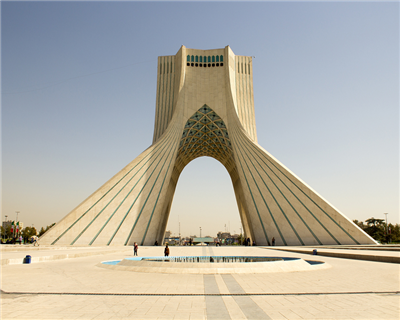The outlook for the Iranian market
Eight months after the implementation of the Joint Comprehensive Plan of Action (JCPOA) on 16 January 2016, Iran’s oil sector has been able to regain access to some of its markets in Asia and Europe. According to the official reports, Iran’s oil export to Asia in June 2016 has doubled since the previous year, reaching its highest level since 4.5 years ago.

Eight months after the implementation of the Joint Comprehensive Plan of Action (JCPOA) on 16 January 2016, Iran’s oil sector has been able to regain access to some of its markets in Asia and Europe. According to the official reports, Iran’s oil export to Asia in June 2016 has doubled since the previous year, reaching its highest level since 4.5 years ago.
China, India, Japan and South Korea have in total imported around 1.7 million bpd in June 2016 and Iran’s oil exports to the Asian emerging markets is expected to increase in the coming months. Although the issue of volatile oil prices is still a serious concern for the oil exporting countries, the success of the Oil Output Freeze plan will make a contribution to bringing back the stability.
On the other hand, the government authorities have made considerable progress in restoring macroeconomic stability under difficult circumstances. As a result, inflation has declined from 45% in 2013 to around 8% in 2016, the foreign exchange market has stabilised, and some key reforms have been instituted. In addition, the country's economic growth has reached 4.4% in the first quarter of the Iranian current calendar year (20 March 2016- 20 June 2016) comes from the recession of 2012 and 2013 caused by the severe impacts of sanctions.
The implementation of the JCPOA bodes well for the current outlook. Increased oil exports, along with lower costs of trade and financial transactions with the Iranian banks reconnecting to the international financial system, would all support the economy to experience a real GDP growth of 4–4.5% over the medium term as projected by IMF.
Thanks to the measures taken by the government to improve the macroeconomic environment, all indicators are now moving in favour of the growth of the country’s economy and investment. This lays the ground for the country to pursue its ambitious yearly plan to absorb $50 billion in the form of foreign direct investment, foreign portfolio investment, and other debt instruments during the country’s next Development Plan. To this end, The Export Guarantee Fund of Iran (EGFI) as Iran’s official ECA, whose national mandate is to support the country’s out-bound export credits, is to help the country reach this aim by cooperating with other ECAs.
In line with the government’s economic policies, the Central Bank of Iran has managed to rejoin SWIFT, reintegrate the Iranian banks to the international financial systems by establishing 472 correspondence relations with banks around the world, create a framework to combat money laundering and the financing of terrorism, improve its supervision over the risk management practices in banks and their compliance with international standards such as the Basel requirements and to increase the banks’ capital.
However, with all the measures taken so far, Iran’s banking system still faces challenges. Major European banks are still reluctant to re-establish their banking relations with Iranian banks, as their stakeholders are concerned about the probable punitive reaction of the US’s Office of Foreign Assets Control (OFAC). However, Iran is trying to get letters of comfort from the OFAC to assure the said banks that they will not face any probable consequences if they decide to resume their banking relations with Tehran.
Thanks to its sound economic conditions of the early 2000s, Iran became the number one recipient of long term financing in the world as the exposure of major ECAs to the country reached $30 billion in 2007. Meanwhile, Iran's public and private sectors are well aware that it is difficult to reach the same international standing without removing the concerns of foreign financiers and investors. But with more than 50 years of positive experience of ECAs working with Iran, there is an optimistic outlook for the future.
There have been quite few cases where Iran has had payment defaults which were not due to an unwillingness to pay, but were due to restrictions caused by the sanctions. Since the implementation of the JCPOA, most of Iran’s outstanding debts have either been re-paid or re-scheduled. It can be concluded that with an effective risk management, a more positive cooperative environment can be expected in future.
Arash Shahraeini
Board Member and Deputy CEO - Export Guarantee Fund of Iran (EGFI)





